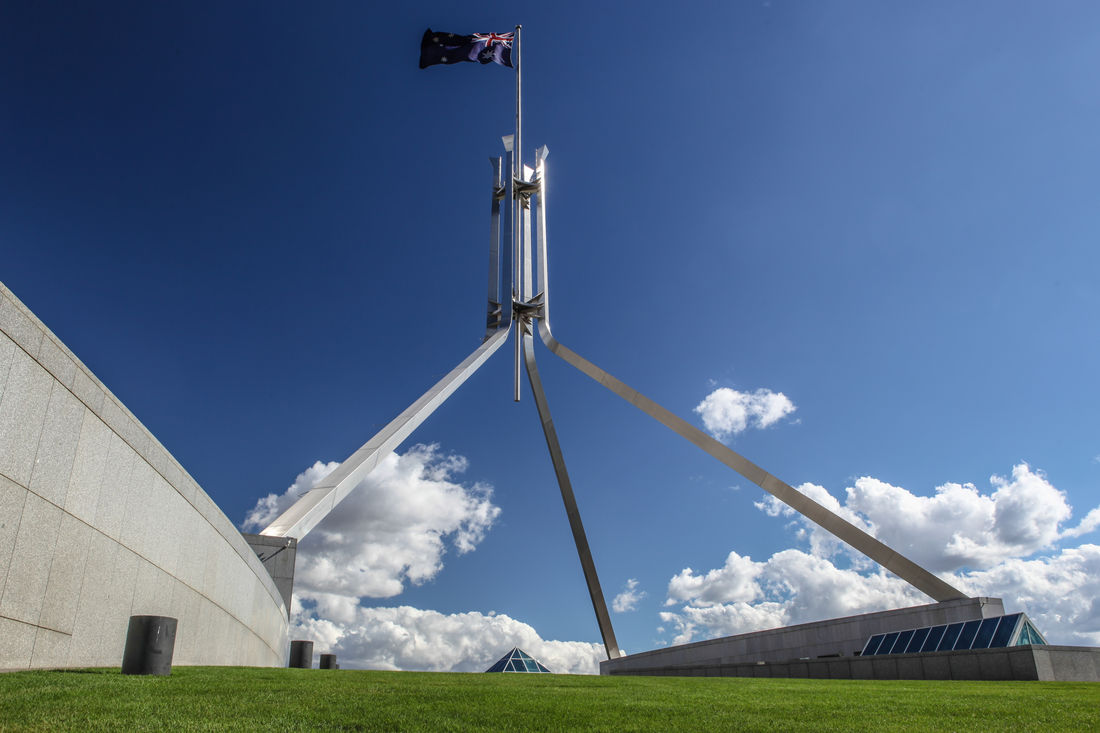In this edition of the Monthly Tax Update for August 2021, we provide the recent updates in legislation along with tax developments in the areas of corporate tax, individual tax and international tax. We also include the ATO’s recent activities, including its publications, class rulings issued in the past month, latest Australian tax cases and other news in this edition.
Download the full PDF Report here
Inside you will find
| Legislation Update |
| OECD and Other Updates |
| ATO Rulings and Activity |
| Latest Australian Tax Cases |
 | Legislation UpdateSince our last update, the following legislations have received assent: Treasury Laws Amendment (COVID-19 Economic Response No 2) Bill 2021The Senate’s amendment to the Treasury Laws Amendment (COVID-19 Economic Response No 2) Bill 2021 has been rejected by the House of Representatives and the Bill will return to the Senate for consideration. The amendments had proposed certain information around the JobKeeper Scheme and COVID-19 payments to large businesses and any voluntary repayments be made publicly available. The Bill otherwise amends the tax law to treat the COVID-19 Disaster Payments and business grants administered by the Commonwealth as non-assessable non-exempt (NANE) income such that recipients will not be subject to income tax on these payments. For more details, please refer here.
Taxation Administration – Single Touch Payroll2019‑20 and 2020‑21 Income Years Closely Held Payees Exemption 2021This instrument provides an exemption under s 389-5 of sch 1 to the Taxation Administration Act 1953 (TAA)for the 2019-20 and 2020-21 financial years from mandatory reporting through Single Touch Payroll (STP) to employers that make payments to closely held payees. An entity is within the class of entities if it:
A closely held payee is an employee of the entity who is also an associate of the entity. An entity to which this instrument applies may still choose to report that an amount has been paid to a closely held payee through STP. If the entity chooses to do so, it will be able to access relief from its obligations to provide payment summaries to the closely held payees, as well as a payment summary annual report to the Commissioner, provided the entity makes a declaration under s 389-20 of sch 1 to the TAA by the due date. An entity to which this instrument applies is not exempt from being required to report amounts paid to employees that are not closely held payees. The entity is still required to report this information through STP. The instrument is taken to have commenced on 1 July 2019. For more details, please refer here.
Exposure Draft legislation for changes to Employee Share Schemes releasedIn the 2021-22 Budget, the Government announced changes to regulatory and tax arrangements for employee share schemes (ESS). Exposure Draft legislation on tax and regulatory changes to ESS has been released on 29 July 2021. The exposure draft legislation implements the 2021–22 Budget measure on tax changes, as well as the regulatory changes previously publicly consulted on in April 2019. The tax changes remove the cessation of employment taxing point for the tax-deferred ESS that are available for all companies. Tax will be deferred until the earliest of the remaining taxing points. Under the regulatory reforms, employers will not have to consider the Corporations Act 2001 (the Corporations Act) when making ESS offers, provided that they do not charge or lend to the relevant employees, and are not otherwise engaged in regulatory avoidance behaviours. Changes relative to what was consulted on previously include:
The closing date for comments is 25 August 2021. For more details, please refer here.
|
OECD and Other UpdatesUpdated transfer pricing country profilesThe Organisation for Economic Cooperation and Development (OECD) has published updated transfer pricing country profiles of 20 jurisdictions, including Australia. The updated profiles focus on key principles in the respective domestic legislation and the extent to which they follow the OECD”s Transfer Pricing Guidelines, including the arm's length principle, methods, comparability analysis, intangible property, intra-group services, cost-contribution agreements, documentation, administrative approaches to avoiding and resolving disputes, safe harbours, and other implementation measures . These updated profiles also contain new information on each country’s legislation and practices regarding the transfer pricing treatment of financial transactions and the application of the “Authorised OECD Approach” (AOA) to attribute profits to permanent establishments. Australia is one of many jurisdictions that have proposed reforms as part of BEPS Action 5 to globally review tax regimes that enjoy tax concessions, with the abolishment of its offshore banking unit regime (currently in a Bill before Parliament). Details of these reforms for a range of countries have been updated by the OECD, and include the United States’ stated intention to abolish its Foreign derived intangible income (FDII) regime. For more details, please refer here.
OECD Taxation Working Papers: Corporate effective tax rates for R&D
The new OECD estimates cover 48 countries and consider the case of large profitable firms, accounting for the bulk of R&D in most economies. The results provide new insights into the generosity of R&D tax incentives from the perspective of firms that decide on whether or where to invest in R&D (extensive margin) and the level (intensive margin) of R&D investment. The generosity of the favourable tax treatment of R&D is shown to vary at the intensive and extensive margins, highlighting differences in countries’ strategies to support R&D through the tax system. For more details, please refer here. Treasury consultation on Patent Box regimeFederal Treasury has commenced its consultation on the proposed design of the Patent Box regime for the medical and biotechnology sectors that was announced as part of the 2021-22 Federal Budget. This proposal is designed to encourage innovation in Australia by taxing corporate income derived from certain patents at a concessional effective corporate tax rate of 17 per cent. The patent box concession is proposed to apply from income years starting on or after 1 July 2022. As part of the consultation process, Treasury has released a discussion paper setting out the key design features of the Patent Box regime and providing a number of questions for stakeholder input. Stakeholders in the clean energy sector are also asked to provide input on incentives to support growth in clean energy technology. Submissions in response to the consultation are due by 16 August 2021. The Government intends to issue exposure draft legislation following the consultation. For more details on the Consultation, please refer here.
Board of Taxation review into R&D incentive administrationAs announced in the 2021-22 Federal Budget, the Board of Taxation is conducting a review to evaluate the dual-agency administration model for the Research & Development (R&D) Tax Incentive administered by both the ATO and Industry Innovation and Science Australia. Under the current model, the R&D tax incentive is administered by the ATO and Industry Innovation and Science Australia. The Board has been asked to evaluate this model with a view to simplify the process and reduce compliance costs for participants. The Board has now released a consultation guide setting out the consultation process for the review, and raising a number of consultation questions. The Board is holding roundtable consultation meetings, and written submissions can be made until 15 September 2021. For more details, please refer to Board of Taxation website here.
|  |
 | ATO Rulings and ActivityCapital allowance reviewsThe ATO has commenced capital allowance reviews to make new effective life determinations for assets that are used by several industries. The reviews cover:
Draft effective lives will be issued for public comment. The ATO expects to complete these reviews within 12 months, with new effective life determinations applying from 1 July 2022. Industry members are welcomed to participate in the reviews. For more details, please refer here.
Taxation Ruling TR 2021/3: Effective life of depreciating assets for 2021–22The ATO has issued its annual taxation ruling on the effective life of depreciating assets. Taxation Ruling TR 2021/3 contains the effective life of depreciating assets under s 40-100 of ITAA 1997. It contains new effective life determinations which have been incorporated into Tables A and B in the sch to TR 2021/3. Table A is an industry category table listing assets peculiar to a particular industry or for which a particular effective life is appropriate because of how the asset is used in that industry. Table B covers assets generally. Taxpayers in industry can only use Table B entries if the particular asset is not listed under the relevant industry heading in Table A. TR 2021/3 takes effect from 1 July 2021. TR 2021/3 replaces TR 2020/3 Income tax: effective life of depreciating assets (applicable from 1 July 2020), which is withdrawn with effect from 1 July 2021. The views contained in TR 2020/3 to the extent to which they are still applicable have been incorporated into TR 2021/3. For further details, please refer here.
New draft guidance for remission of penalties relating to the Superannuation Guarantee charge (SGC)The ATO has released a draft practice statement (PS LA 2021/D1) which outlines the Commissioner’s revised approach in relation to the remission of additional SGC imposed under Part 7 of the Superannuation Guarantee (Administration) Act 1992 (Cth). This draft PS LA is intended to combine the principles in PS LA 2020/4 (which only applied to quarters ending on or before 31 March 2018) with the revised remission principles for quarters commencing from 1 April 2018. Under PS LA 2021/D1, the ATO expectation is that minimum penalties of 100 per cent of the SG charge will apply where an employer did not come forward voluntarily and it took ATO compliance action for them to disclose the SG shortfall. Voluntary disclosures made after the SG charge statement due date but prior to the commencement of ATO compliance action may still attract base penalties of up to 40 per cent of the SG charge, depending on the taxpayer’s circumstances, including their compliance history, other mitigating factors and any exceptional circumstances. A key inclusion within the new draft PS LA is the intention to limit the remission of penalties where an employer’s compliance behavior in relation to SG obligations is not improving. Employers will need to be more proactive in assessing compliance to avoid an SG charge arising 28 days following the end of a particular quarter. This emphasises the importance of revisiting existing processes and controls in relation to SG compliance. Comments can be made to the ATO on PS LA 2021/D1 up until 27 August 2021. For more details, please refer here.
Guidance on deemed dividend rules for private companiesThe ATO has issued the following in relation to the application of the deemed dividend rules (Division 7A of the Income Tax Assessment Act 1936 (Cth)), which apply to private companies:
The benchmark interest rate for the 2021–22 income year for Div 7A purposes remains at 4.52% per annum. This benchmark interest rate is relevant to private company loans made or deemed to have been made after 3 December 1997 and before 1 July 2021 and to trustee loans made after 11 December 2002 and before 1 July 2021. It is used to:
For more details, please refer here.
Updated Practical Compliance Guideline PCG 2017/13This PCG deals with the repayment of unpaid present entitlements (UPEs) owing from a trust to a private company beneficiary to extend its application to sub-trust arrangements maturing in the 2021 income year. The updated guideline extends the application of the ATO’s pre-existing guidance (PS LA 2010/4 Division 7A: trust entitlements) to seven-year sub-trust arrangements so that it applies to those maturing in the 2021 income year. The ATO has confirmed that if the principal of the loan is not repaid on or before the date of maturity, a seven year Division 7A complying loan agreement may be put in place between the trust and the private company beneficiary. For more details, please refer here.
Transfer pricing and local file instructions and lodgment for 2021The ATO has released the local file instructions for the 2021 local file as part of a taxpayer’s country-by country (CBC) reporting obligations. Updates to the instructions include, among other things, instructions for new fields (including a new question on whether debt interests are interest free), highlighting reporting rules for capital amounts for derivatives and debt interests (including loans and borrowings), and expanded instructions for foreign currency deferred payment arrangements. The ATO has confirmed that 31 December 2020 early balancing entities have additional time until 30 August 2021 to lodge Part A of their 2021 local file if they indicate in their tax return they are taking up the local file administrative solution (ie the entity does not need to complete questions 2 to 17 of the International dealings schedule 2021 (IDS)). The income tax return and all other relevant sections of the 2021 IDS must still be lodged by 15 July 2021, or the relevant due date, subject to any relevant lodgment deferrals or concessions. For more details, please refer here.
ATO guidance on deducting expenses associated with vacant landThe ATO has issued draft Taxation Ruling TR 2021/D5 which sets out the ATO’s preliminary view on various aspects of the vacant land expenses rules in s 26-102 of ITAA 1997. The ATO has indicated that short breaks between residential leases eg, to undertake repairs, during which a property is unavailable for lease would generally not result in land holding expenses to be denied under the vacant land deduction rules. The ATO has also stated that borrowing costs (including interest) related to construction loans to build a residential property on vacant land do not fall within the ambit of borrowing costs related to holding vacant land. As such, the rules would not deny interest deductions to that extent. The rules in s 26-102 of ITAA 1997 operate from 1 July 2019 to deny deductions for expenses related to holding vacant land, including land on which a residential rental property is either under construction or being substantially renovated, or which has a completed residential property that is not available for rent, regardless of when the land was purchased. The rules generally apply to individuals and SMSFs with companies and institutional investors, such as other superannuation funds made specifically exempt from the rules. Other key exclusions include expenses incurred in connection with carrying on a business, eg property development, or a primary production business. There are also exemptions for structures affected by natural disasters or other exceptional circumstances. The draft ruling discusses and illustrates with examples the various scenarios in which these exclusions operate and the scope of the conditions that a rental property must be available for rent, and capable of being lawfully occupied, to not be regarded as a vacant property. It clarifies the interaction of s 26-102 with the ATO’s views in TR 2004/4 on the deduction of interest after a business activity has ceased, and the position for land held under separate multiple titles. An addendum has also been issued to TR 2004/4 for this reason. The last day for submitting comments on the draft ruling is 17 September 2021. For more details, please refer here.
Class rulings issued:
|
Latest Australian Tax Cases
|  |
Download the full PDF Report here
For more information, contact us:
| Managing Director Cameron Allen +61 3 9939 4488 cameron.allen@aa.tax |
